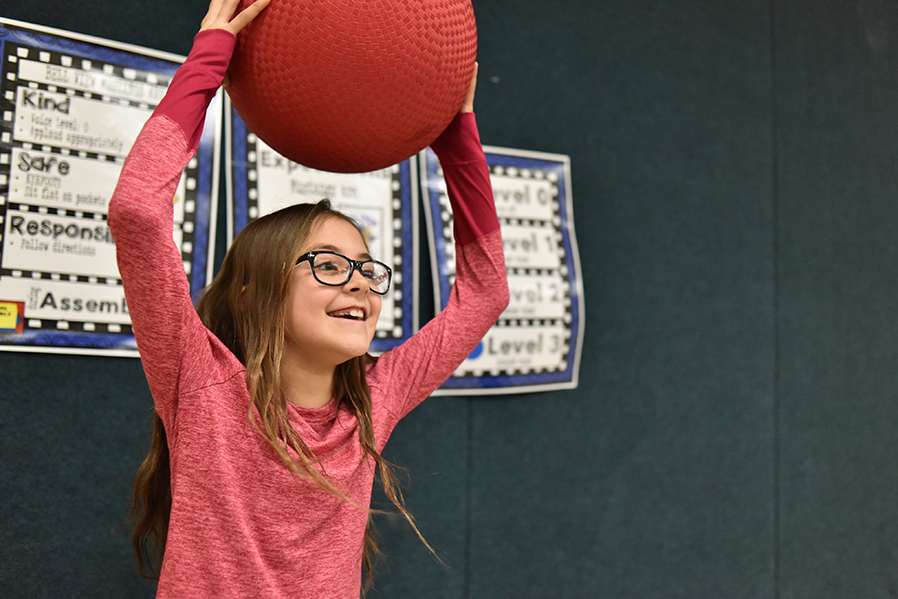Hantis

Any Size
Ages 6-10
Bouncy Balls
10 minutes or more
Development Goal
Team-work, hand-eye coordination, agility, ambidexterity, creativity.
Before You Start
- Determine which ball to use. Beginners may need a small playground ball. Experts need a tennis ball to play.
- Explain the goal of the game, possessions, outs, rotation and serve.
- Encourage a hands-on approach to learning the game.
Set Up
Spread the four tables one yard evenly apart from each other in a rectangle formation. Provide enough space around the entire outside of the tables to allow for movement.
How to Play
Hantis is a unique game because players can hit the ball twice and with any part of the body.
Goal:
- The goal of any Hantis game is to make a player on the opposing team out.
Possession:
- During a possession of play, each player on a team is allowed one table hit and two personal hits. Change of possession occurs when a ball hits an opposing table or player.
Outs:
- There are the five total ways to make an out:
- An out occurs when…
- The ball hits the player’s table and hits the ground.
- The ball hits the player and hits the ground.
- The ball is cupped.
- The ball hits the player’s table 2 times in a possession.
- The ball hits the player 3 times in a possession.
- An out occurs when…
Rotation:
- Just like in four-square, when a player gets out, they go to the back of the line.
- The first person in line takes Table 1 and the other three players rotate toward the serving table. This rotation gets everyone involved quickly and allows for teammates to change almost every play.
- Players waiting in line can socialize and enjoy the action.
Serve:
- This is very similar to a serve in ping-pong. In a proper serve, the ball must first hit the server’s hand, hit off the serving table, and then into the other team’s possession.
Video:
Variations
- Use a small playground ball for beginning players.
- For even more fun, encourage players to use their imagination and create tricks: Alley-oop passing, behind the back shots, between the legs, heading the ball, etc.
- If the ball bounces off a neutral surface (i.e. desks, chairs, trees, walls, benches, etc.), but does not hit the ground, it is still in play. The use of these neutral surfaces can lead to some intense and crazy volleys.
Creator/Author:
Hantis was created by Thaxton Marshall, Ben Fartherree and Jason Johns. Find out more at Hantis.net.